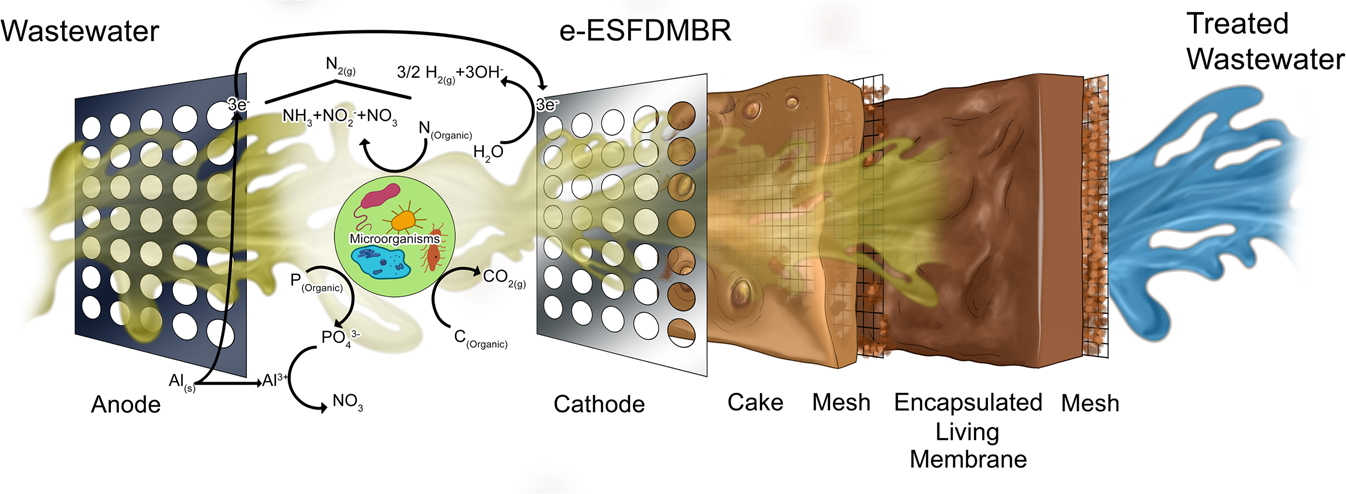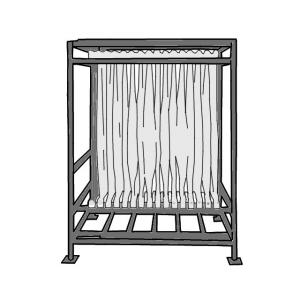The Advantages of Using a Membrane Bioreactor for Efficient Water Purification
Membrane Bioreactors Described: Reliable Solutions for Clean Water
Membrane bioreactors (MBRs) have become an advanced remedy for dealing with journalism difficulties of wastewater therapy. By incorporating organic procedures with innovative membrane filtration, MBRs not only enhance the top quality of treated water but likewise decrease the spatial needs of therapy centers. As ecological concerns heighten, the function of MBR modern technology in advertising lasting water monitoring comes to be significantly substantial. Nonetheless, the intricacies of their procedure, benefits, and prospective applications merit a closer evaluation to fully understand their influence on the future of water therapy.

What Are Membrane Bioreactors?
Membrane bioreactors (MBRs) are innovative wastewater therapy systems that incorporate biological destruction procedures with membrane layer filtration technology. This assimilation enables for the effective elimination of pollutants from water, making MBRs a preferred selection in different applications, consisting of local wastewater treatment and commercial effluent administration.

Among the important advantages of MBRs is their capacity to produce high-quality effluent, commonly suitable for reuse in watering or industrial processes. In addition, MBRs need a smaller sized footprint contrasted to standard treatment systems, making them excellent for metropolitan settings where space might be restricted.
Furthermore, MBRs can properly deal with differing influent lots and are less prone to the results of harmful shocks. These attributes add to their growing popularity as a sustainable solution for resolving the enhancing demand for tidy water while minimizing environmental influences.
Just How Membrane Bioreactors Work
While the operation of membrane layer bioreactors (MBRs) might appear complex, it essentially focuses on the harmony in between organic processes and membrane filtration. MBRs integrate an organic therapy procedure, typically triggered sludge, with a membrane layer splitting up device to deal with wastewater successfully.
In an MBR system, wastewater is initial introduced into a bioreactor where microorganisms deteriorate raw material and other pollutants. The biological activity decreases the focus of pollutants while promoting the growth of biomass. Following this biological treatment, the blended liquor goes through membrane filtering, which can be microfiltration or ultrafiltration, depending upon the preferred effluent high quality.
The membranes serve as a physical barrier, allowing water and small solutes to pass while retaining put on hold solids and bigger particles. This allows the system to preserve a high concentration of biomass within the reactor, boosting the therapy effectiveness.
Additionally, the continual separation of cured water from the biomass promotes a small design and lessens the impact of the treatment facility. On the whole, the mix of biological degradation and membrane layer purification in MBRs leads to dependable and reliable wastewater therapy, guaranteeing top quality effluent suitable for different applications.
Advantages of MBR Modern Technology
Among the essential benefits of membrane bioreactor (MBR) technology is its capability to produce high-quality effluent with a significantly lowered footprint contrasted to traditional wastewater therapy techniques. MBR systems effectively incorporate biological therapy and membrane filtering, resulting in remarkable removal of impurities, including put on hold solids, pathogens, and raw material. This ability brings about effluent that typically meets or exceeds rigid regulatory requirements for reuse and discharge.
Additionally, MBR innovation enables greater biomass concentrations, which boosts the treatment effectiveness and lowers the required reactor quantity. This compact style is particularly helpful in urban areas where area is restricted. The operational flexibility of MBR systems likewise suggests they can adapt to varying influent high qualities and circulation prices, making them suitable for a vast array of applications.
Moreover, the decreased sludge manufacturing connected with MBR procedures contributes to lower operational and maintenance expenses. The membrane layers offer as a physical obstacle, minimizing the risk of clogging and allowing longer operational periods between cleaning. Generally, the benefits of MBR modern technology make it an eye-catching solution for sustainable wastewater treatment, addressing both environmental issues and the requirement for effective resource management.
Applications of Membrane Bioreactors
With their flexibility and efficiency, membrane bioreactors (MBRs) find applications across numerous fields, consisting of metropolitan wastewater treatment, industrial processes, and also water recovery. In metropolitan setups, MBRs supply a portable option for treating wastewater, efficiently removing contaminants while at the same time producing high-quality effluent that fulfills strict regulative requirements. This makes them particularly ideal for locations with restricted space.
In commercial applications, MBR innovation is used for treating procedure water, especially in industries such as food and drink, drugs, and petrochemicals. These industries profit from MBRs' capability to deal with high natural tons and their effectiveness in recouping useful resources from wastewater, such as nutrients and water.
In addition, MBRs play a vital role in water recovery efforts, making it possible for the reuse of dealt with wastewater for irrigation, commercial processes, or also as potable water after more treatment (Membrane Bioreactor). Their performance in eliminating toxins and microorganisms makes them content a reliable selection for guaranteeing water top quality in various reuse applications
Future of Water Therapy Solutions
The future of water treatment options is positioned for transformative developments driven by technical development and boosting environmental understanding. As international water scarcity ends up being a pressing issue, brand-new methodologies, including membrane layer bioreactor (MBR) systems, are set to play a critical duty in enhancing the effectiveness and sustainability of water therapy procedures.
Emerging innovations such as fabricated intelligence and artificial intelligence are expected to optimize treatment operations, enabling real-time surveillance and predictive maintenance. This will enhance the total reliability and effectiveness of water treatment facilities. Improvements in membrane materials, such as graphene and nanofiltration, promise to get more boost permeation rates and minimize fouling, leading to reduced power intake and functional prices.
Additionally, the integration of renewable power sources right into water therapy plants will add to greener methods. The round economic climate design will certainly likewise obtain traction, urging the healing of beneficial resources from wastewater, such as nutrients and power.
Verdict

Membrane layer bioreactors (MBRs) have arised as an innovative option for dealing with the pushing difficulties of wastewater therapy. By incorporating biological procedures with sophisticated membrane layer filtration, MBRs not only enhance the quality of cured water yet additionally minimize the spatial needs of treatment centers.One of the key benefits of membrane bioreactor (MBR) modern technology is its ability to create high-quality effluent with a significantly lowered footprint compared to standard wastewater therapy techniques.With their versatility and effectiveness, membrane layer bioreactors (MBRs) find applications across different fields, including community wastewater therapy, commercial procedures, and also water reclamation.In final thought, membrane layer bioreactors stand for a significant development in wastewater address treatment innovation, incorporating organic procedures with reliable membrane layer filtration to produce premium effluent.